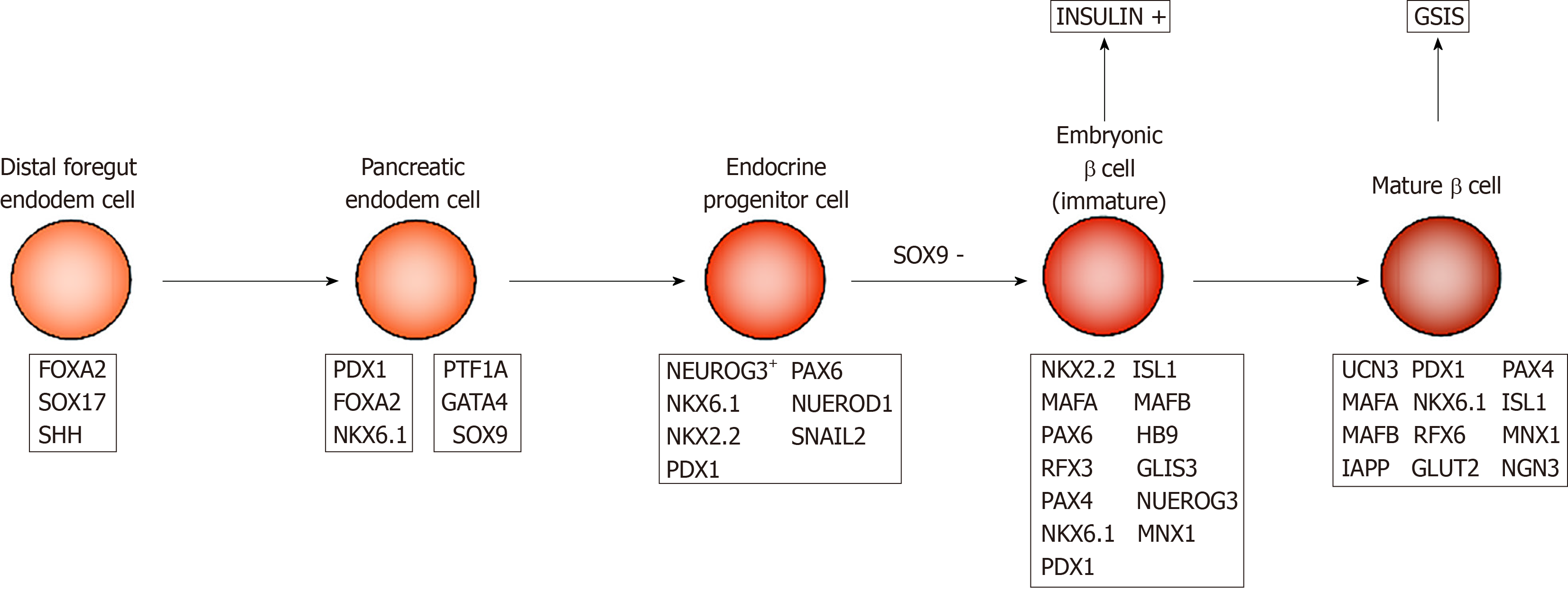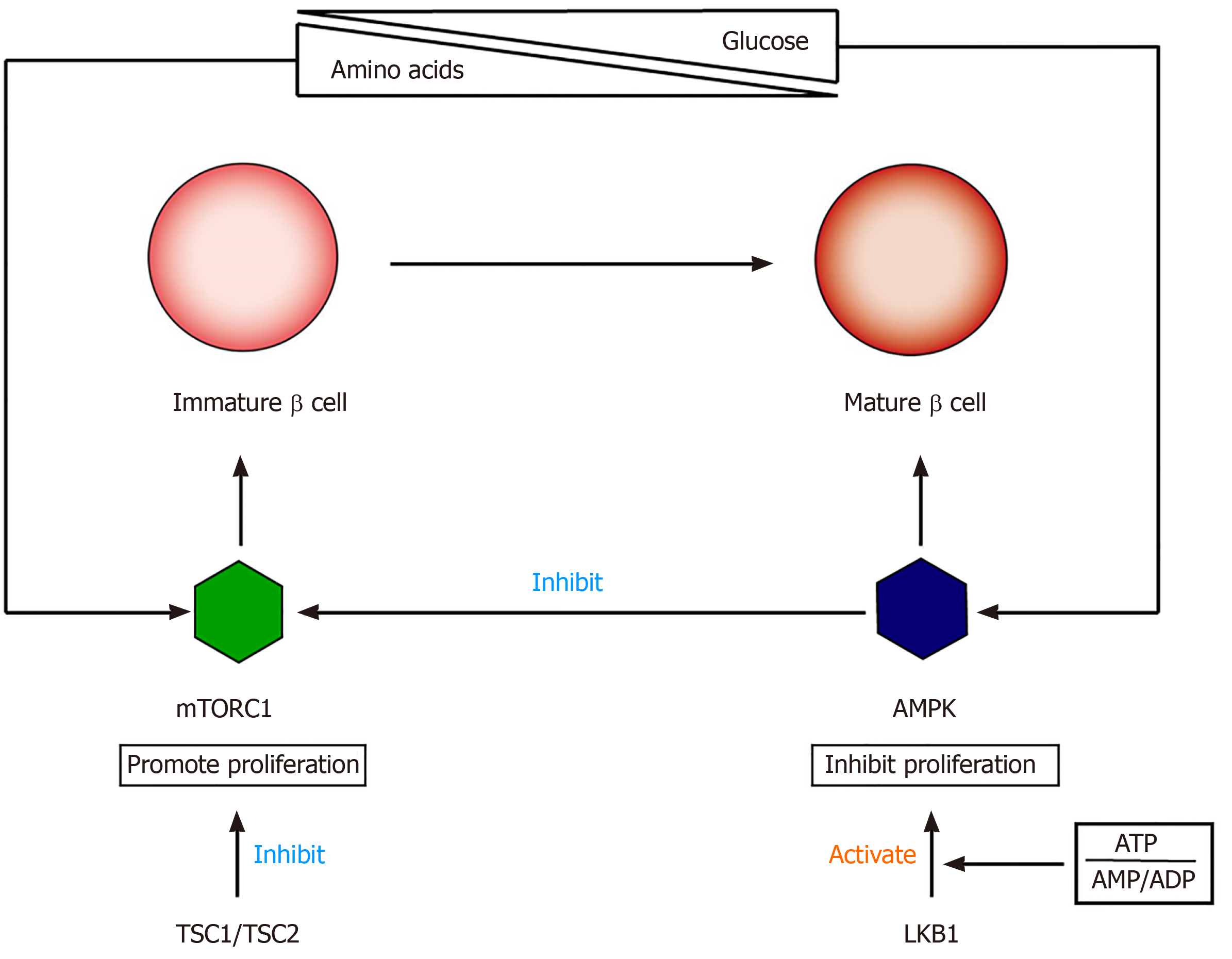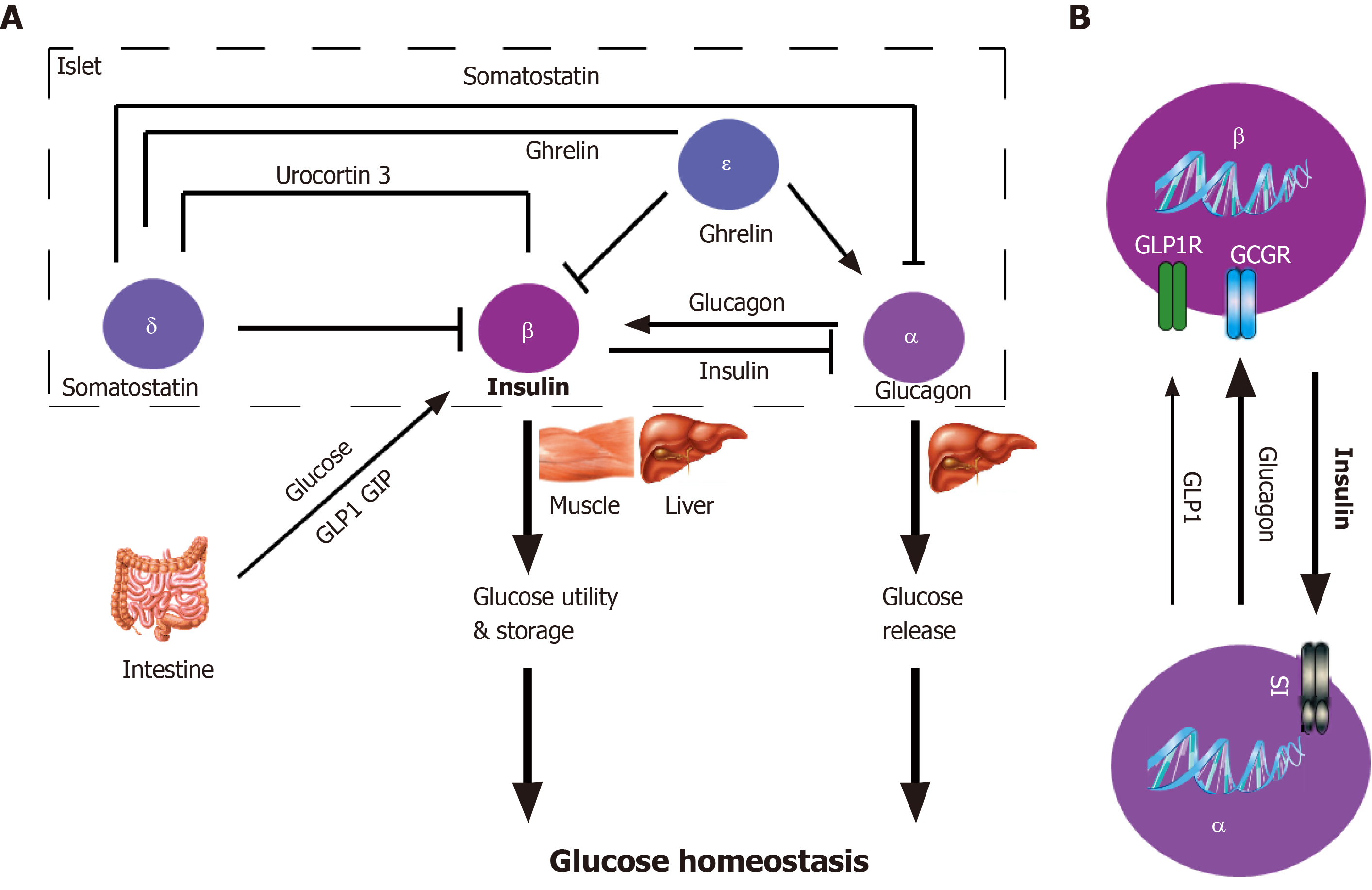Copyright
©The Author(s) 2021.
World J Stem Cells. Mar 26, 2021; 13(3): 193-207
Published online Mar 26, 2021. doi: 10.4252/wjsc.v13.i3.193
Published online Mar 26, 2021. doi: 10.4252/wjsc.v13.i3.193
Figure 1 β-cell development and maturation in vivo.
Important stages of β cell development and maturation in vivo, which mainly include distal foregut endoderm, pancreatic endoderm, endocrine progenitor, immature β cells, and mature β cells, and key transcription factors involved are described. GSIS: Glucose stimulated insulin secretion.
Figure 2 Relationship between mTORC1 and AMPK in the process of β cell transformation from immature to mature.
Immediately after birth, the nutritional substrates are mainly amino acids, which activate the nutritionally sensitive mTORC1 and promote cell proliferation. mTORC1 is inhibited by AMPK and upstream regulatory factors TSC1/TSC2. When the nutritional substrate changes from amino acids to glucose, AMPK activity is stimulated. AMPK is activated by the upstream factor LKB1 under the regulation of intracellular ratio of ATP vs AMP/ADP, inhibits β cell proliferation, and promotes maturation, resulting in the establishment of adult-type glucose stimulated insulin secretion.
Figure 3 Paracrine regulations within the pancreatic islets.
A: There are at least 5 paracrine regulatory circuits within the islets, among which α and β cells are two important cells that fine-tune the secretion of islet hormones that regulate blood glucose homeostasis. At the same time, δ and ε cells can also regulate the secretion of insulin and glucagon through the paracrine interactions. Meanwhile, the enteroendocrine hormones GLP1 and GIP secreted from the intestinal endocrine cells can also regulate β-cell insulin secretion by binding to receptors on the cell membrane; B: More detailed interactions between α and β cells.
- Citation: Sun ZY, Yu TY, Jiang FX, Wang W. Functional maturation of immature β cells: A roadblock for stem cell therapy for type 1 diabetes. World J Stem Cells 2021; 13(3): 193-207
- URL: https://www.wjgnet.com/1948-0210/full/v13/i3/193.htm
- DOI: https://dx.doi.org/10.4252/wjsc.v13.i3.193











